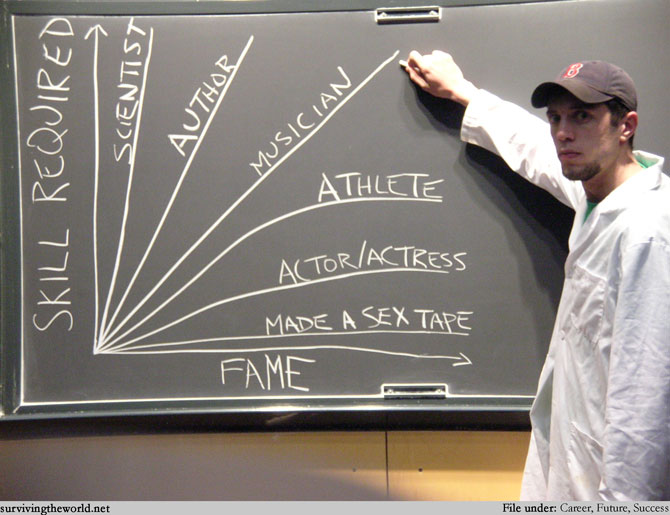This is one of my favourite TED talks. John Bohannon completely blew my mind. In the space of eleven minutes using dancers he talks about laser cooling, super fluids, slow light, and cellular biology. This talk, especially the first half, is a synthesis of all the things I have come to believe about science communication. Incredible choreography and timing.
John also runs the popular Dance your PH.d contest I entered a couple years back. My favourite line from the talk:
I think that bad Powerpoint presentations are a serious threat to the global economy.
My only criticism is that during the second half, when he is making his point about Powerpoint and arts funding, the dancers were distracting. The attention should have been solely on John and what he was saying, not the lazy boy the dancers formed. I think it would have been more powerful to have the dancers leave the stage and then rush back in for the finale. The absence of the dancers would have fit nicely with his point about what would happen if arts funding is cut. Still, this is a very minor quibble. I loved this talk and will be watching it over and over again.
(via Madhur Anand)















